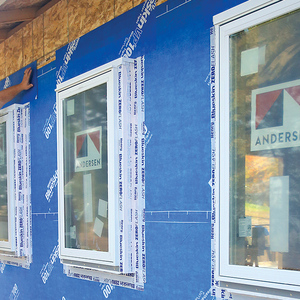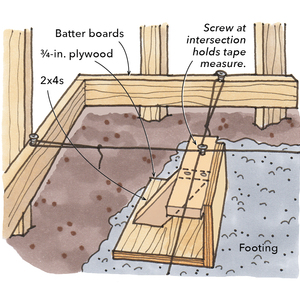After recent power-out, my parents want a generator, at least to the boilers for heat and to keep the food and some lights. Asking the electrician to put in separate lines is going to get very expensive. So I am thinking of handling this with extension cords.
For the boilers, there are 2 Peerless, gas, standing pilot, more than 30 years old Honeywell controls and a small pump in each. They are hard-wired to the main box.
The electrical systems have seen some power surges, especially one time when the transformers from the street went bad and the power company changed it (the light bulbs went really bright, but no damage to other things in the house).
I started my research on generators and I am getting confusing messages. One plumbers says amateur hook ups can fry the controls in the boiler, but does not list the why. One person, engineer?, says, in comparing standard and inverted generators, that even the standard generators produce fairly steady power so that most modern electronics can be plugged right into the generator. Inverted generators (with good inverters) do better.
Can generators send spiked power that damage boiler controls (controls in boiler body, auto shut off, thermostats)? For example, when it is restarted after a refill?
And would you see if I am the right road? This is what I was planning:
1. Put an outlet in the middle of current power line that comes direct from service box. Outlet would be connected to the line on the boiler side. I would use single outlet.
2. Put a plug on the line that comes from service. This way, the current is reestablished when plugged, and unplugged, it would separate the boiler from the service box.
3. In a power-out, line from generator can be plugged into the outlet and give power to the boiler controls.
Going back to the generators, I saw that generators come with several outlets that may be rated 15 amp, 20 amp, etc., but has only one breaker switch. Since starting wattage of pump motors and refrigerator is twice the running wattage, I plan to get generator that has minimum twice the wattage than I need. In this case, is single breaker switch on the generator enough? Or should I look for generator (if existing) that has breakers for each outlet?
Even an answer that I am overthinking this would be appreciated, but please add why. I am finding that generators aren’t plug and play types and more I research, more questions I get. Thank you in advance.



















Replies
Do not run extension cords
We lost power several years back and house was 42 degrees for 5 days. Electrician installed a swtich-over-pannel that powers 6 circuts: frig, furnace, freezer, garage door circut and a couple of circuts around the MBr. There is a cable that runs out from the swtich-over-pannel to the generator -- generator go for all kinds of prices mine is a Honda - 5000kw ($1400) and the pannel deal installed was $6-800. Used it in February wehn we lost power for 2 days when is was in the teens - we were in tee shirts -- best investment we ever made. here is the sequence: power goes out, uncover the genator, pull the cord to the genrator, connect cablet, and then flip the switch inside and we are back in business.
Neighbor has one that is natural gas - it comes on automatically, does a diagnostic monthy check, and sends a status e-mail to you if it needs service and lets you know if things are OK.
You can get a manual transfer switch for a reasonable cost. I got mine after the Y2K fiasco for less than 50 bucks, though you'll pay more now.
There is one critical piece of information you haven't mentioned: load calculation. Before you buy a properly sized generator you need to know the voltage (120 vs 240) of all loads. Then add up the current requirements, and add about 20% for motor starting loads.
LOW COST XFER switches
Simply use a few 3-way light switches
common to the load -, boiler/furnace; lights, fridge, freezer, tv
One side of 3 way switch to regular panel circuit breaker.
other side of 3 way switch to plug that plugs into the generator
LOW COST XFER switches
Simply use a few 3-way light switches
common to the load -, boiler/furnace; lights, fridge, freezer, tv
One side of 3 way switch to regular panel circuit breaker.
other side of 3 way switch to plug that plugs into the generator
Interlock
An interlock switch is cheap , safe, and easy. Don't back feed the panel since it would energize the transmission lines and could fry a POCO worker.
http://www.interlockkit.com/?gclid=CJiI2dPv46ACFQ8eDQodjBF1Eg
KK
The manual transfer switches for a handful of circuits are reasonably inexpensive, and within the realm of a DIYer to install.
But if I understand you, what you're proposing is another reasonable approach (though it may be restricted by code in some areas) -- basically, cut the wire feeding each device you want to be able to power from the generator and install a plug and socket. Normally the plug is plugged into the socket, getting power from the main panel, but if need be you can unplug the device and plug it into an extension cord from the generator.
(However, I notice that you seem to have "plug" and "outlet" reversed in your description. The plug (the part with exposed pins) should be connected to the furnace or whatever, and the outlet should be fed from the breaker panel. NEVER the other way around. You can, of course, find "plugs" (male connectors) that are mounted to a plate and "outlets" (female connectors) that attach to the end of a cord, but the issue is which way the pins point, not whether one or the other is mounted to something.)
What you should NEVER do is use a "suicide cord" to plug the generator into the house power, after (supposedly) disconnecting the main breaker. It's dangerous to do for a number of reasons.
Re generators causing damage, I wouldn't be too worried, if you buy a good quality genset. The real danger (though relatively modest) is overvoltage or undervoltage, which can be hard on electric motors. But if you have a good quality unit and don't overload it (or your extension cords) this shouldn't be a major hazard. Most modern electronics are really quite immune to problems coming in on the power line.
generator
Thank you all for your ideas. Now I am leaning towards the manual transfer switch. Locking plate look interesting, but I will compare it to transfer switch for easy use (for my parents). Thank you for the heads-up on my plug idea. I can see that plug can become dangerous when power comes back. All were really helpful, thank you.